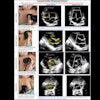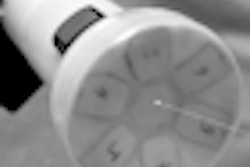Computer-enhanced dynamic analysis of ultrasound elastography movies is a useful and reliable method for depicting liver hardness, yielding a high level of interreader agreement, according to research published April 14 in the World Journal of Gastroenterology.
A research team led by Dr. Dan Ionut Gheonea, of the University of Medicine and Pharmacy of Craiova in Romania, found no statistical differences between two readers using a computer-enhanced elastography analysis technique to characterize patients being assessed for liver fibrosis.
Because analyzing only selected elastography images has been shown to be an operator-dependent endeavor, the researchers sought instead to test a method using dynamic analysis of several frames of elastography movies, hoping for a reduction in possible selection bias or artifacts. Over an 18-month period, they prospectively evaluated 97 patients with chronic liver disease and healthy volunteers with transabdominal ultrasound elastography (WJG, April 14, 2010, Vol. 16:14, pp. 1720-1726).
Two physicians performed elastography exams using an EUB-8500 ultrasound system (Hitachi Medical, Tokyo) with a 6.5-MHz linear probe. Three 10-second movies were recorded by each examiner for every patient.
Each movie then received a computer-enhanced dynamic analysis using the ImageJ open-source Java-based image processing software and a special plug-in developed by the researchers to compute and analyze individual hue histograms from each frame of the movie.
Two expert physicians independently diagnosed all of the patients as either normal or having liver steatosis, chronic hepatitis, or cirrhosis.
The researchers did not discover any statistically significant difference between the two physicians' computer-enhanced movie analysis, regardless of disease type: cirrhosis (p = 0.54), chronic hepatitis (p = 0.85), steatosis (p = 0.81), and healthy subjects (p = 0.78). They also found very good interobserver variability results using three statistical methods.
The study group judged real-time elastography to be useful, although they believe it should be tested in large multicenter trials and compared with other noninvasive methods such as blood markers and transient elastography.
"We also suggest an improvement of the examination methodology, which should take into account previous observations made by different authors (better transducers, improved elastography software) to establish real-time elastography as a new revolutionary method that can replace liver biopsy for assessment of different stages of fibrosis in patients with chronic hepatitis," the authors wrote.
By Erik L. Ridley
AuntMinnie.com staff writer
April 14, 2010
Related Reading
Transient elastography cuts liver biopsy rate in nonalcoholic steatohepatitis, January 29, 2010
Ultrasound elastography characterizes fibrosis severity, January 6, 2010
Mayo Clinic develops MR elastography for liver patients, November 18, 2008
CT maintains edge over MRI in liver transplant planning, March 10, 2008
Advanced liver imaging shapes surgical strategies, September 18, 2007
Copyright © 2010 AuntMinnie.com




















